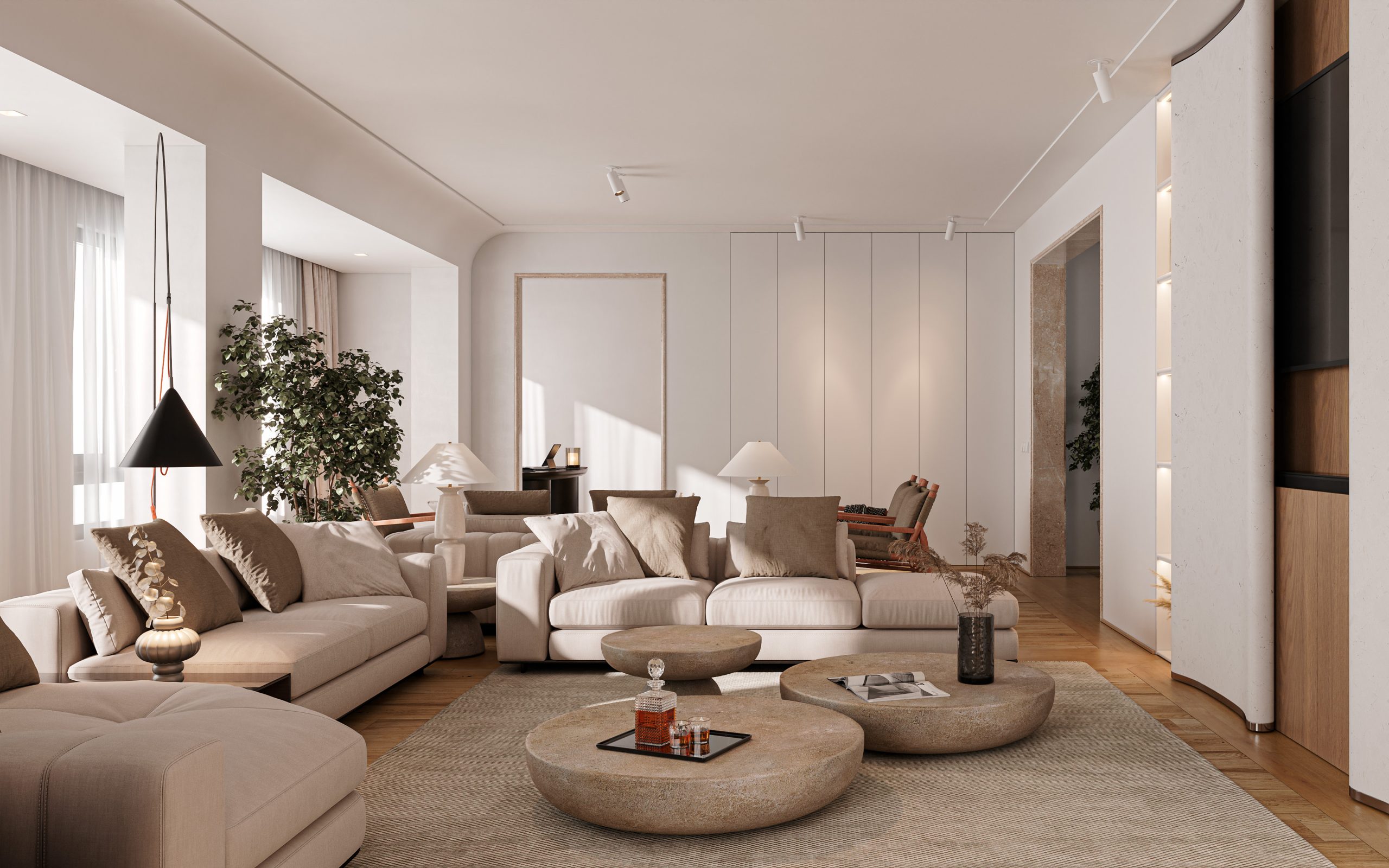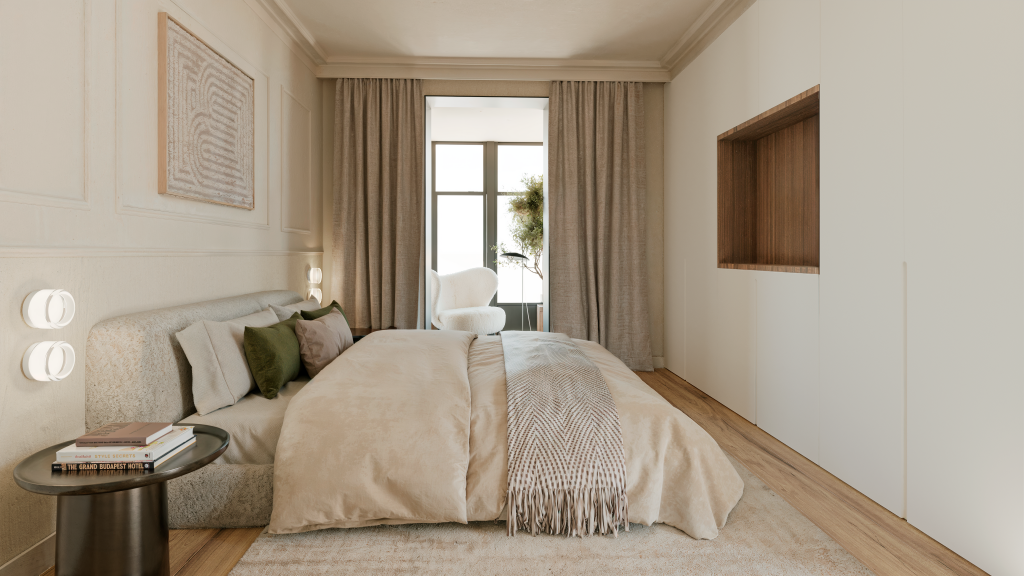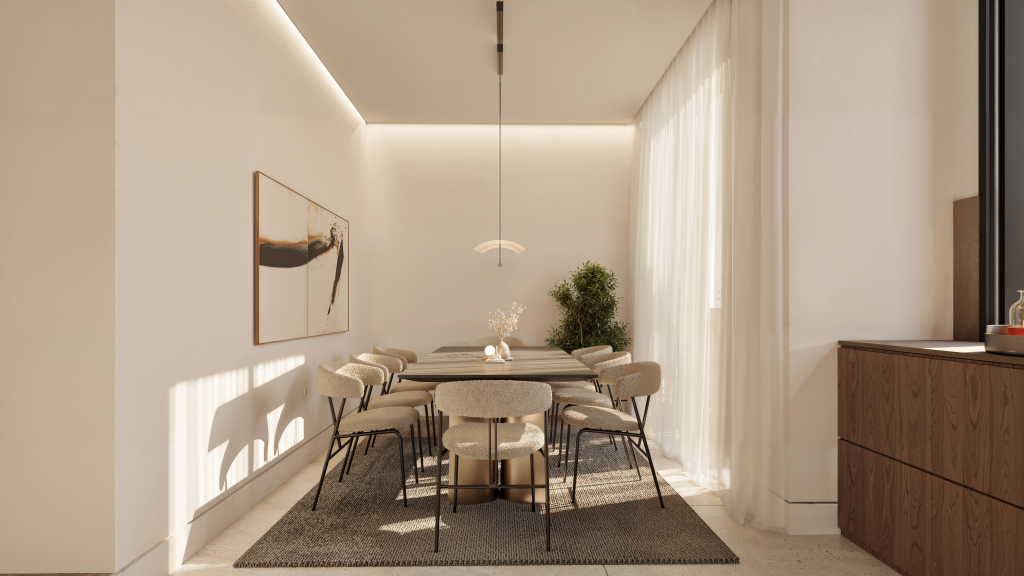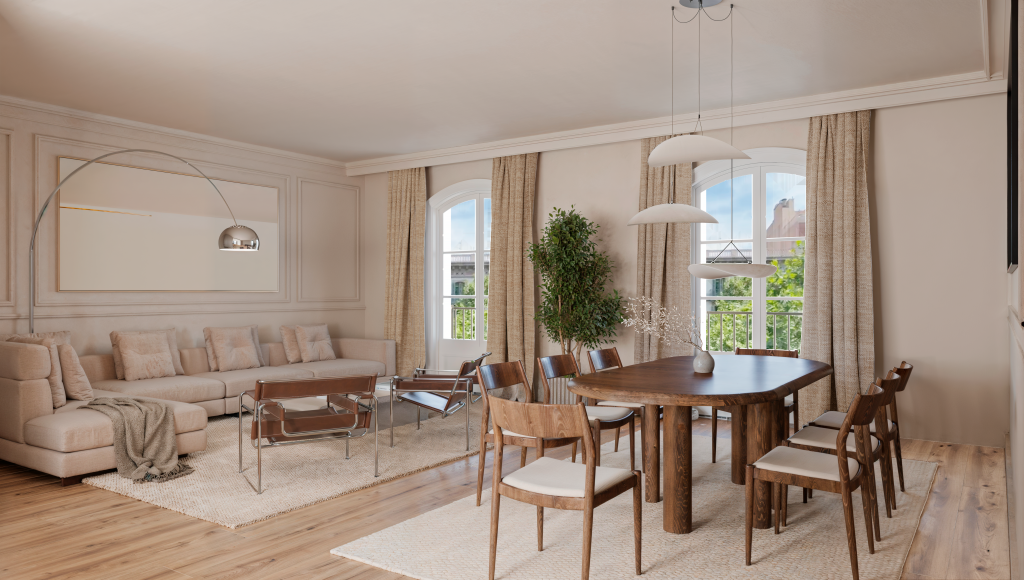In today’s market, listings compete for a split second of attention on Rightmove, Zoopla, and international portals. A few snapshots of an empty room won’t cut it—especially for off-plan or refurbished stock. What converts is a clear, aspirational story of the space. That’s where photoreal 3D visuals come in.
Photos vs. Renders: why choose both
Traditional photography proves what exists today. Its limit: it can’t show potential. High-quality 3D renders open the door to what a home will look and feel like once finished—lighting, materials, and furnishing choices presented with precision. Used together, they deliver credibility and desire:
- Real photos anchor transparency and context.
- Interior and exterior renders stage lifestyle and finish quality before works are complete.
- Interactive assets (virtual tours, short clips) increase time on page and enquiry quality.
This hybrid approach consistently lifts click-through, saves agents from “can’t picture it” objections, and accelerates reservations for developers selling off-plan.
Selling before it’s built
“Selling on paper” has become selling through convincing visual experiences. A calibrated set of stills and short motion clips does three jobs at once: it explains spatial logic (how rooms connect), it signals finish quality (materials, joinery, lighting), and it frames lifestyle (furnishing scale, views, amenity context). Buyers no longer need imagination—they see it.
Key takeaways
- Photos alone rarely differentiate a listing.
- Photoreal renders amplify perceived value and clarity.
- A hybrid stack—photos + renders + virtual tour—maximises portal performance and lead quality.
- Modern visualization lets you market confidently pre-completion.
The Best Way to Sell Off-Plan
Selling a property off-plan is one of the biggest commercial challenges in the sector. The client is not buying something they see, but something they imagine. Here, renders play a decisive role: they allow you to show the final result with detail, setting and personalized style, eliminating the mental friction involved in “imagining” what the space will be like.
The best developers know this and use hyper-realistic renders that not only show the property, but also connect it with an emotional narrative: the sunset from the terrace, the warmth of an open kitchen, or the tranquility of a bedroom with natural light. This visual storytelling shortens sales cycles, raises the average ticket price and reduces uncertainty.
FAQs
Q1: What’s the difference between photos and Property CGI?
Photos show the current state. Property CGI and CGI property images depict the finished vision with light, materials, and décor dialled in. Use photos for proof, and House renders to sell the future.
Q2: Can CGI help with refurb or fit-out campaigns?
Yes. For Interior design schemes, we build a precise 3D model and create room-by-room Rendering that communicates layout, finishes, and joinery—ideal for approvals and sales previews.
Q3: How do you produce accurate visuals?
From CAD and specs we develop a clean 3D model, calibrate materials, then render multiple angles. This workflow ensures consistent Property visuals across portals, brochures, and microsites.
Q4: What if the unit is empty today?
Use Virtual Home Staging or Virtual Staging. We generate a virtual staged image set that places furniture, art, and lighting to show scale and lifestyle—without the cost or delay of physical staging.
Q5: Where do CGI assets perform best?
Across listings, paid social, email, and sales suites. A core pack of CGI property images plus a brief tour improves engagement and lead quality while keeping the story consistent.
Q6: Is CGI compliant with reality?
We match drawings, schedules, and samples. Any optional items are flagged on the image to keep Rendering honest while still persuasive.
